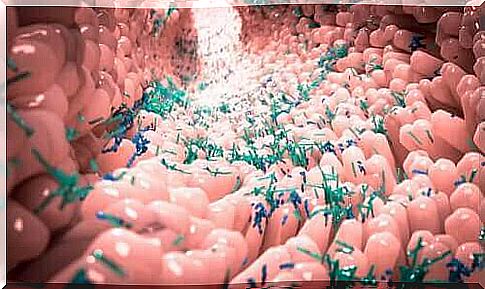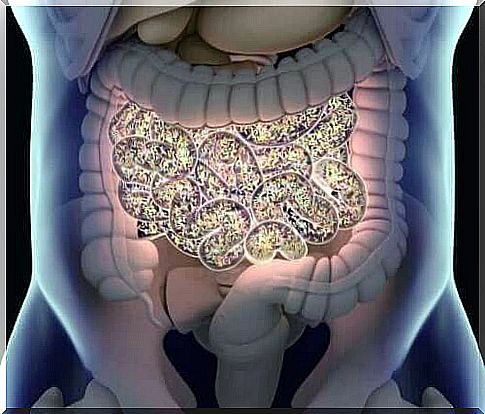What Is Normal Microbiota?

Bacteria are microorganisms that, despite their small size, play an important role in how our world works. Scientists estimate that they represent 50% of the total biomass on the planet. Humans also show indispensable relationships with them through normal microbiota.
In this article we will show you what normal microbiota in your body is and what it consists of, which is also called microbiome.
What is normal microbiota?
Normal microbiota or microbiome is defined by the set of microorganisms that are typically found in our bodies in healthy individuals distributed in different parts of the body.
This interaction is a symbiotic relationship between the host and the bacterium, since both parties benefit from the relationship. Some of the benefits are as follows:
Normal intestinal flora is essential for the proper functioning of our physiological systems. Sources such as the National Autonomous University of Mexico estimate that humans have about 100 billion microorganisms in their bodies. This shows that we cannot look at our existence as it is today without looking at the microbiome.

Categories for human microbiome
The term, microbiota, is used in the wrong contexts if we analyze the use of the word, since it has been established that bacteria are not in any way related to vegetables. For this reason, it is better to refer to the different bacterial populations grouped based on their functions as microbial ecosystems.
All these populations give rise to the normal microbiota, which we can divide into two categories:
- Autochthonous microbiota: These are the microorganisms that live in our body for longer or forever. They participate in quantifiable physiological processes and have evolved along with our species thanks to the fact that they have adapted to the environment we offer them.
- Allokton microbiota: These microorganisms appear in any habitat and can appear in our bodies accidentally or temporarily. They do not participate in any physiological processes, since their relationship with humans is based on random encounters.
The general concept can also be qualified based on how long they live in the body:
- Latent microbiota: These are a variety of organisms that the host has throughout life. In this case, the host is us. The population usually does not have significant fluctuations and the symbiosis relationship is perfect.
- Transient microbiota: This is the type that has persistent fluctuations in its population, and is usually not essential for the host’s survival. Factors such as season, age or medications can cause changes in it.
The bacteria in our intestinal tract will therefore be an example of a latent microbiota. They are necessary for the proper functioning of the digestive system and remain with us throughout life.
What does a normal microbiota consist of?

In a healthy person, internal tissues such as blood and the brain are free of bacteria. In contrast, external tissues and the tissues surrounded by mucous membranes such as the intestines, skin and throat have lots of symbiotic microorganisms.
Scientists estimate that the intestinal flora contains more than 400 species of bacteria. If you take it even further: For every human cell, they estimate that there are ten microbes in our body.
It is almost impossible to name all the significant species present in normal intestinal flora. For this reason, there is a list of the most common species based on the body part based on their common, random, rare or potentially pathogenic presence. Microbiota has a very clear representation in certain areas such as:
- The skin, dominated by gram-positive bacteria.
- The intestines, where the microbiota can weigh about 1.5 kilos.
- Vagina, where the primary species is Lactobacillus (96% of all microbes in this area).
- The mouth, which has one of the most complex and heterogeneous microbiota in the body.
An essential microscopic world
As we have been able to see in a general way, normal microbiota in the human body is infinitely complex. Certain ideas need to be made clear to us: Some bacteria are essential and will always remain in our body while others are in our body temporarily.
These bacterial populations vary according to the area and the person, but the combination of them all constitutes normal microbiota for humans.









